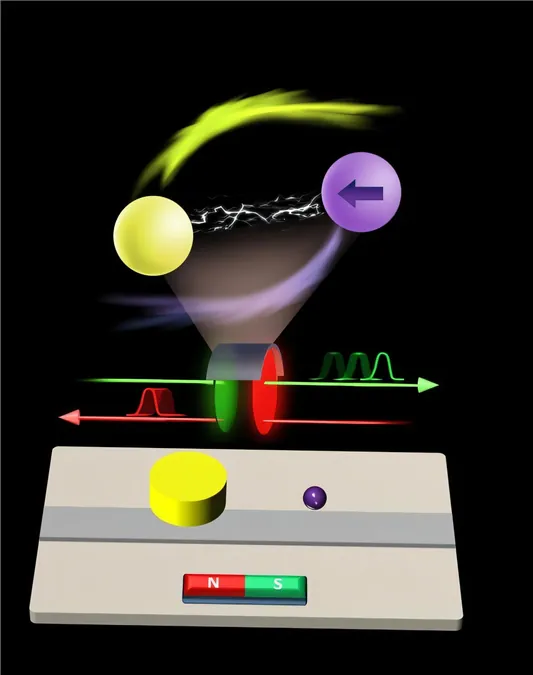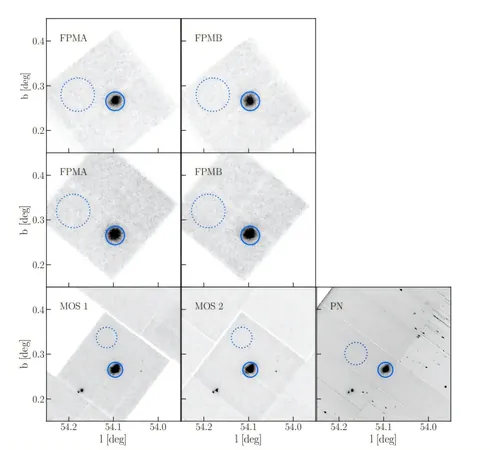
Revolutionary Breakthrough: Control Light Speed Nonreciprocally!
2025-06-08
Author: Li
Unlocking the Secrets of Light Speed Control
Imagine a world where we can manipulate the speed of light at will—a game-changer for communication technology and quantum computing! Researchers have taken a monumental step towards this reality by achieving nonreciprocal control of light speed using an innovative cavity magnonics device.
Current Limitations of Light Manipulation
Traditionally, methods to control light speed relied on techniques like electromagnetically induced transparency (EIT). While effective, these strategies only allow for reciprocal control, meaning light behaves the same way regardless of its travel direction. But what if we could control the speed of light differently depending on its direction? This nonreciprocal control could pave the way for groundbreaking technology that sends signals more efficiently.
A Collaborative Breakthrough
A dynamic duo of researchers from the University of Manitoba and Lanzhou University have cracked the code! They published their findings in the prestigious journal *Physical Review Letters*, showcasing a method that couples microwave photons with magnons. Professor Can-Ming Hu, the leading researcher, describes this achievement as a pivotal advancement, allowing for substantial isolation ratios and customizable signal transmission.
Harnessing the Power of Phase Manipulation
The team's focus extends beyond just light's amplitude; they've also probed its phase—the timing of light waves relative to one another. Hu shines more light on this: "Phase manipulation affects how information is transmitted through systems. Surprisingly, we're able to achieve nonreciprocal phase control, challenging long-held beliefs in physics about Kramers-Kronig relations!"
Creating a Hybridized System
Their breakthrough involves a cleverly designed hybrid system combining dielectric resonators and magnetic materials. The intrinsic chirality of these materials allows for directed control of light speed by leveraging additional dissipative coupling. This clever design leads to a reliable and adjustable light propagation system.
Testing the Waters of Innovation
When the researchers sent microwave pulses from both directions into their newly developed system, they uncovered an astonishing effect: the pulses traveled at different speeds depending on their direction—nonreciprocally! This discovery hints at exciting opportunities in various fields, from communication to neuromorphic computing.
A Bright Future Ahead
While they’ve made significant strides, the team acknowledges that there’s room for enhancement. Professor Hu notes, "Although our results are promising, the delay and advance effects are currently modest. Our next steps include new techniques to amplify these effects for practical applications across multiple industries." The future of nonreciprocal light speed control is not just a theory; it’s on the brink of realization. Stay tuned for more incredible advancements in this exciting field!


 Brasil (PT)
Brasil (PT)
 Canada (EN)
Canada (EN)
 Chile (ES)
Chile (ES)
 Česko (CS)
Česko (CS)
 대한민국 (KO)
대한민국 (KO)
 España (ES)
España (ES)
 France (FR)
France (FR)
 Hong Kong (EN)
Hong Kong (EN)
 Italia (IT)
Italia (IT)
 日本 (JA)
日本 (JA)
 Magyarország (HU)
Magyarország (HU)
 Norge (NO)
Norge (NO)
 Polska (PL)
Polska (PL)
 Schweiz (DE)
Schweiz (DE)
 Singapore (EN)
Singapore (EN)
 Sverige (SV)
Sverige (SV)
 Suomi (FI)
Suomi (FI)
 Türkiye (TR)
Türkiye (TR)
 الإمارات العربية المتحدة (AR)
الإمارات العربية المتحدة (AR)